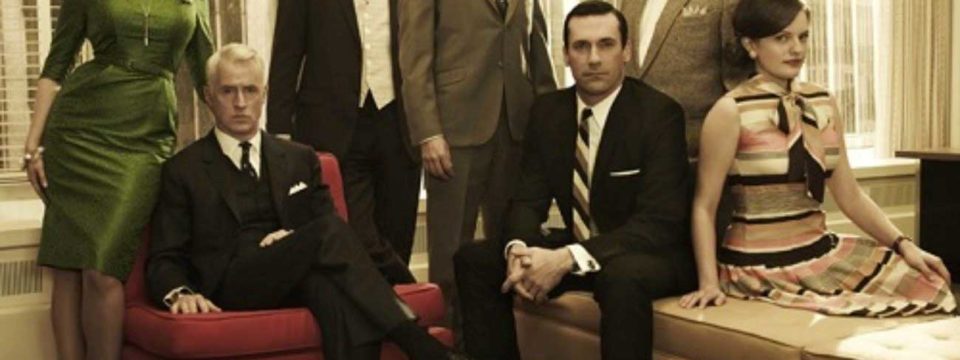I’ve said this before, and I’ll say it again:
Nothing in Marketing & Communications has changed in centuries and more.
Back in January of 2013, the New York Times published an article by Stephen Baker on engaging Social Media for effective marketing and advertising. He used the image of Don Draper of Mad Men as the “old school” way of doing things.
Apparently the Mad Men era was all about a humanistic approach to advertising. It was about “gut feelings.” Apparently those chaps sat around trying to figure out what “spoke” to the customer, and how to get them to react to a campaign dreamed up in a haze of cigarette smoke and whiskey.
But now we are in the world of Social and Digital media, according to Baker. Now the number crunchers are king! The idea-people may still be needed to come up with some visual idea and a snazzy headline, but the real leader is the one who can crank the numbers.
Following that logic, eventually a computer will create the most effective headline and visual as well as determine the best ad buy on the web.
Except… That’s 100% wrong!
Before you call me a dinosaur or a luddite who doesn’t understand Social Media, hear me out, please.
No one – not even the mighty Facebook – has been able to figure out how to effectively use data to market a brand. Yes, they have ads, as does Twitter, but the numbers just aren’t going to cut it, I’m afraid. The article points out that on Black Friday of 2012, only “a scant 0.68 percent of purchases came directly from Facebook.”
The “Social Media experts” will go on to explain that the impact of the ads might have still had an effect on a later click and purchase. Looking at who clicks what at a single point in time, they say, is not realistic. That look today may influence a buy at a later date.
Which is what advertising had been doing forever. Nothing new there. Thanks very much, cutting-edge-social-media expert at the agency…
Everyone knows that it is virtually impossible to count the impact of a print or TV ad. Yet millions are spent on Superbowl ads each year! When was the last time someone spent millions on a Facebook ad? I don’t know…
We can estimate the number of “impressions” a Superbowl ad will make (not everyone watches the TV during ads). The web gives more firm numbers, even though most people ignore those irritating banners.
The quantitative analysis that today’s digital world provides was supposed to do away with the uncertainty.
Except… it hasn’t.
The marketer still does a soft-shoe routine explaining how a million impressions but a 3% click-through rate (and a further 5% purchase-completion rate on that) is really quite good.
(Doing the math, that’s 1500 people)
The Don Drapers of old would give a impassioned plea to “measure the feelings that your brand instills in the hearts of the potential consumer leading to an overall willingness to consider the product in the future.”
Nowadays I hear a similar plea, but with psycho-social babble thrown in: “the persistent impressions leading to intermediate response stimuli affecting purchasing decisions at opportune moments.”
Ugh. Sounds so complicated – it’s better we leave this in the hands of those new-fangled “social media experts,” isn’t it?
And that’s where many brands (and agencies) make their biggest mistake!
Successful advertising has been following the gut since Claudius, of “Claudius’ Green Grapes” painted a mural on the side of his store on the main street heading to the Coliseum. Pedestrians all remembered the ad and stopped by on their way home, ravenous after the gladiatorial bouts. And these people told their friends, who told their friends. And so on… Claudius went on to become emperor of the green grocers.
Social Media is an evolving place, and the experts are needed. But spending hours a day on Facebook and having 3,000 friends does not an expert make.
I’m sorry to say this, but those 17-year olds you have your eye on to hire before they head off to University to head up your social-media engagement department… well… you’d be stupid to do it.
Sure we need these young and engaged people to give us their gut feeling on which social media site will work best – which is the hottest right now – what’s trending on Reddit – and which campaigns will resonate the best. But that’s what they are relying on: gut feelings. Combine that with good copy and visuals – something that hasn’t changed since man learned to draw, and you have a winner.
We come back to gut feelings. Don Draper had it in Mad Men, and frankly, despite what boring spreadsheets your analyst sends you, the bottom line is that a good advertising people will still have a gut feeling about what will work and what won’t.
The number crunchers, social media experts, and quantitative analysts are needed, just as the Nielsen Rating guys were needed when TV was in its infancy. But I wouldn’t trust a million dollar campaign to someone who is self-deluded into thinking the “new way” is different from the “old.”
